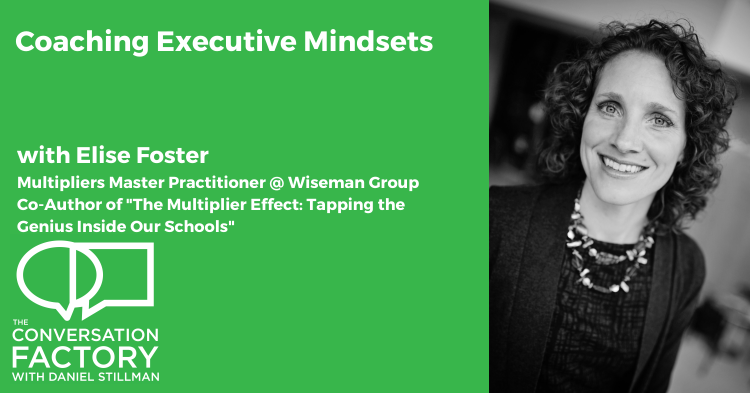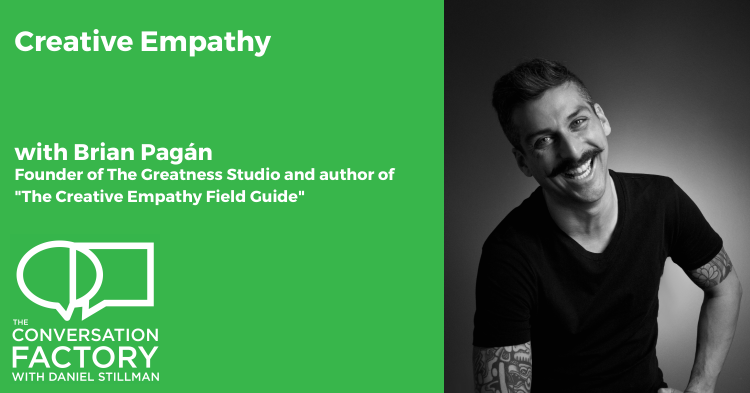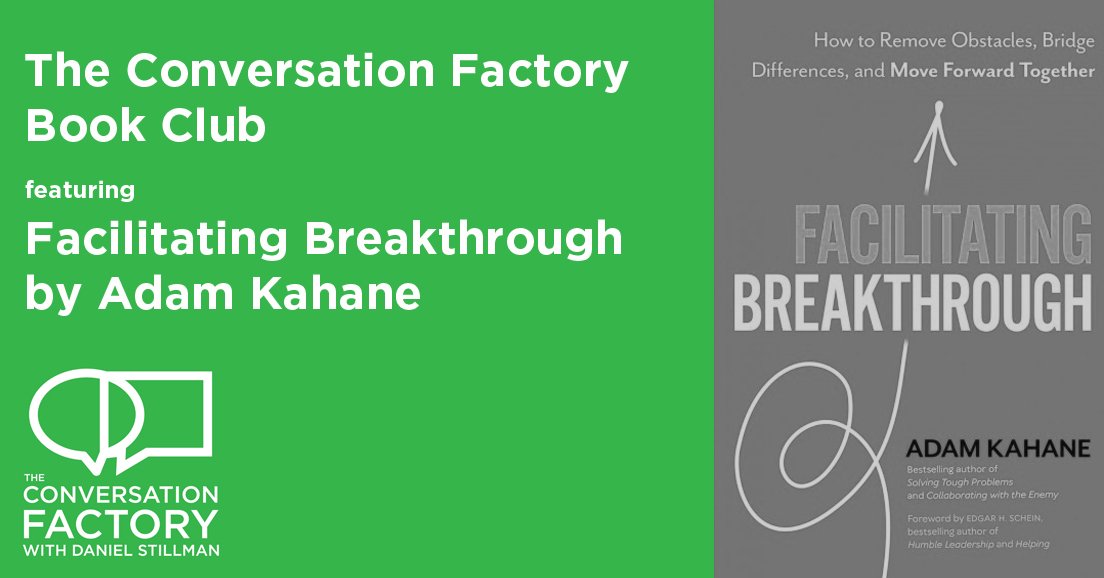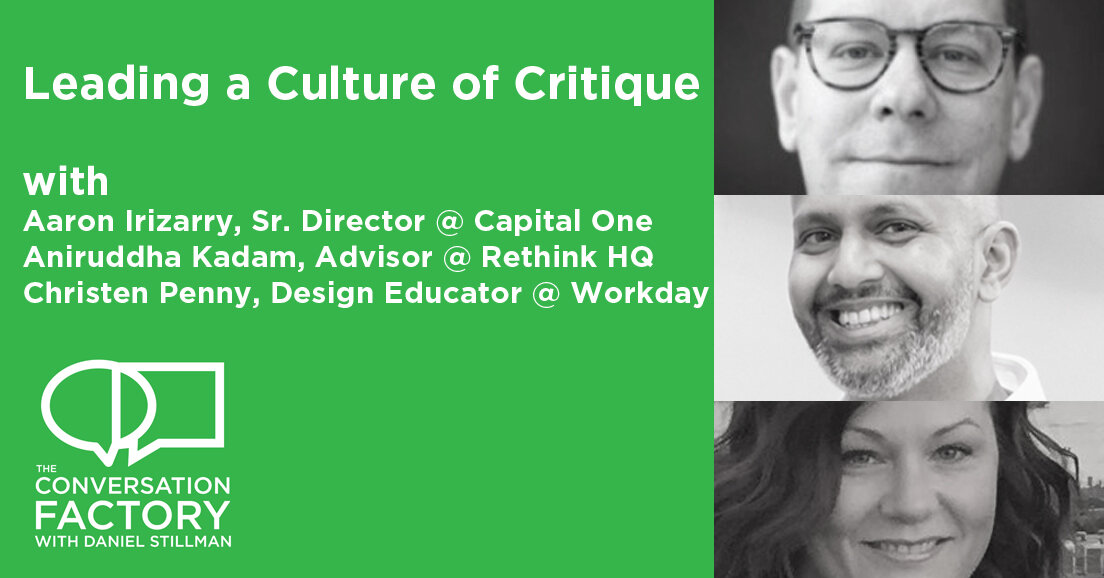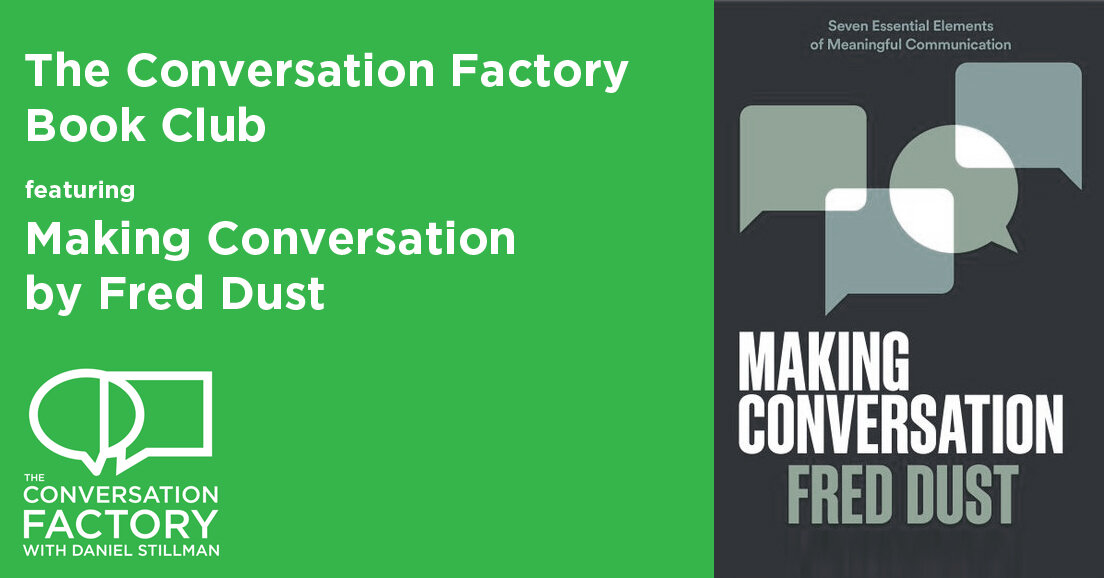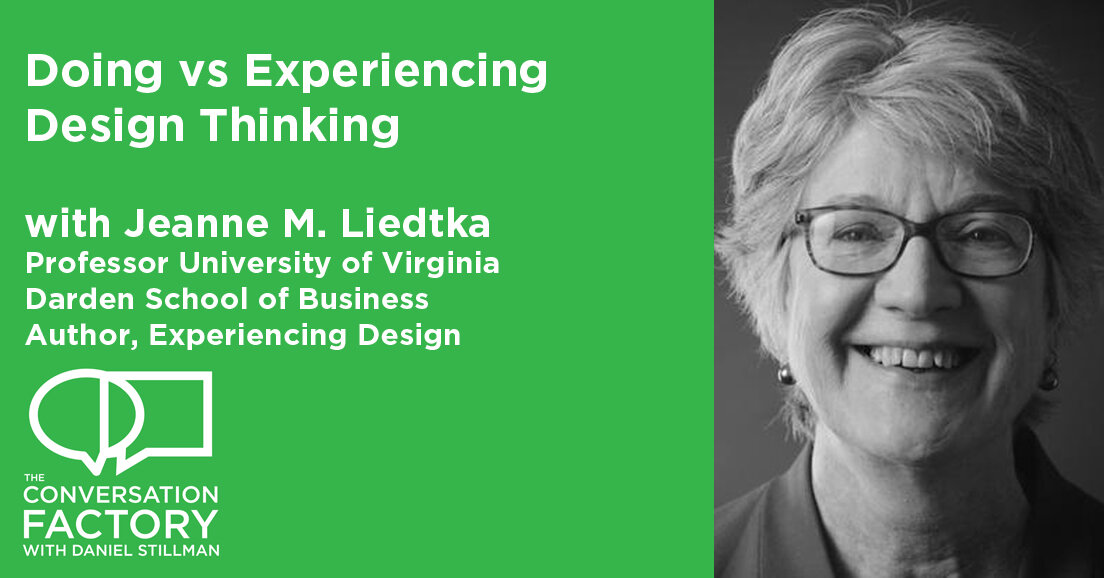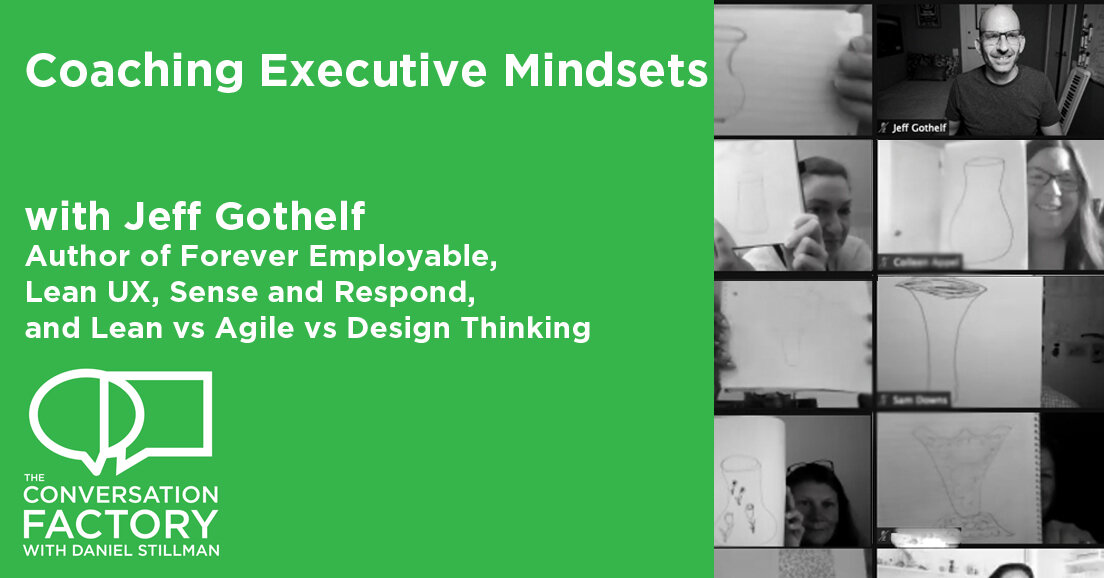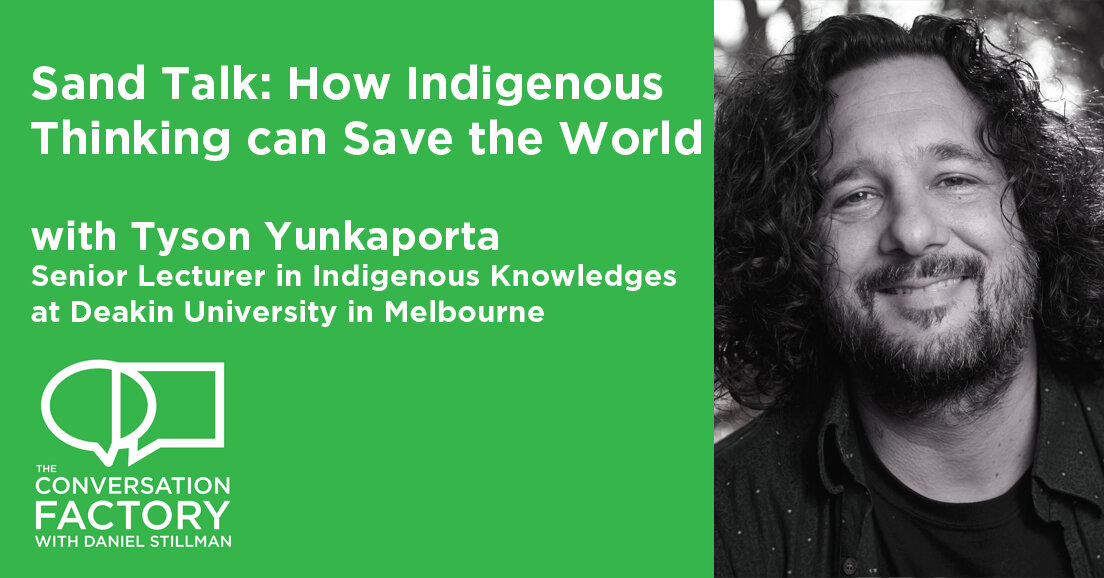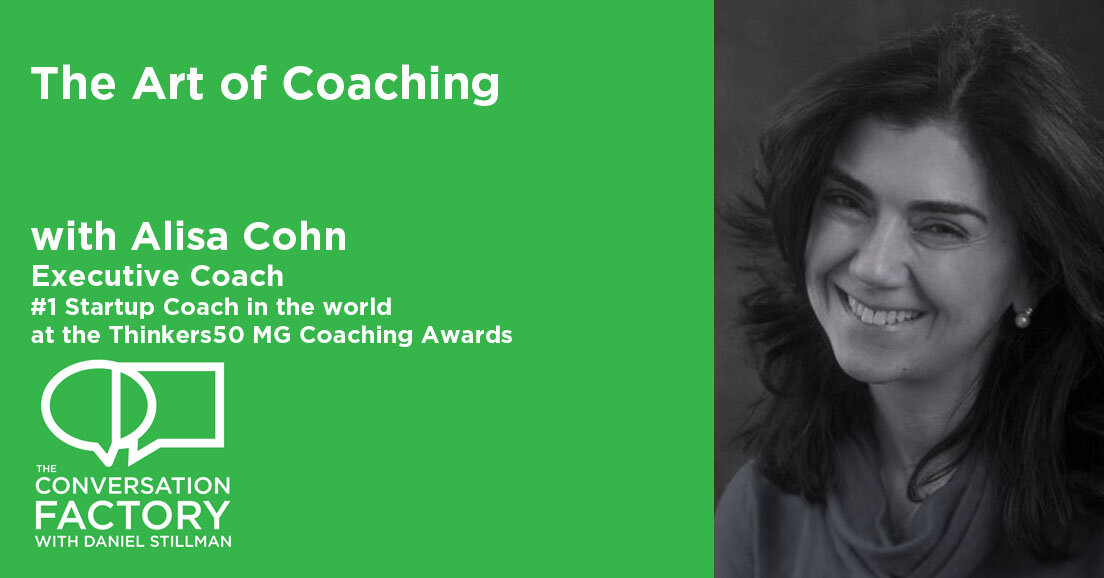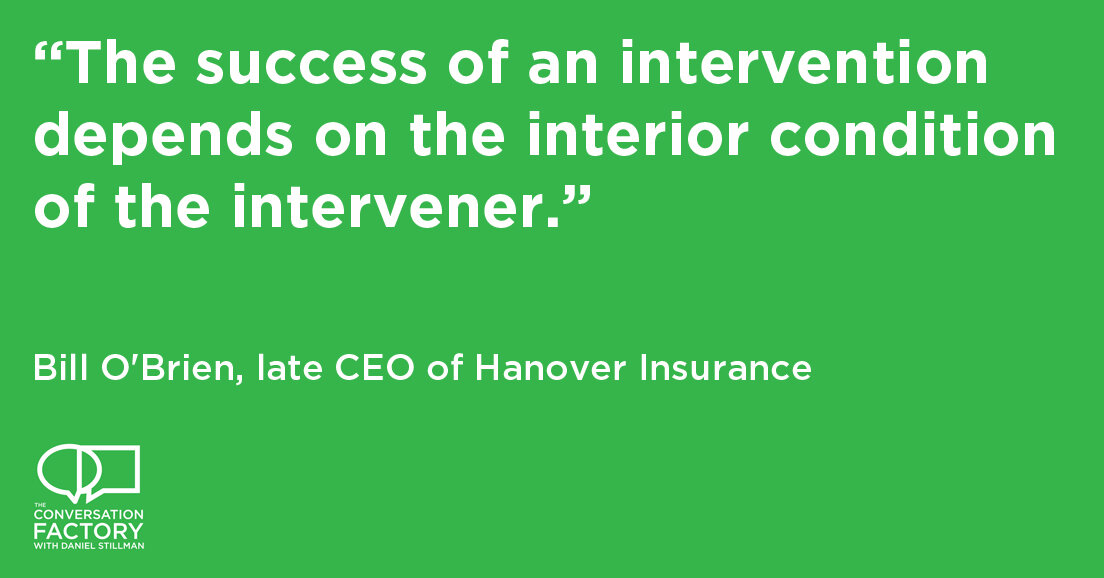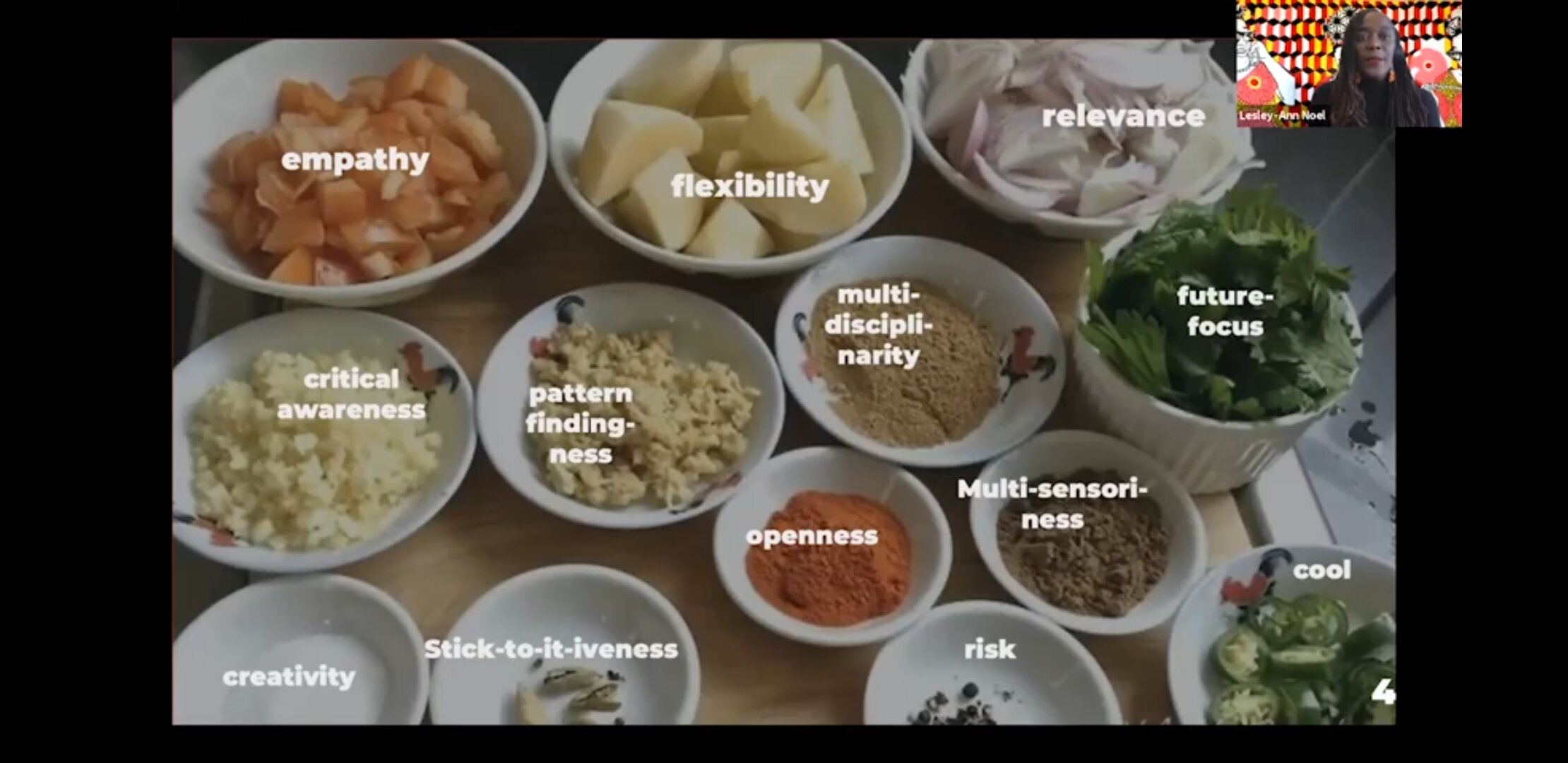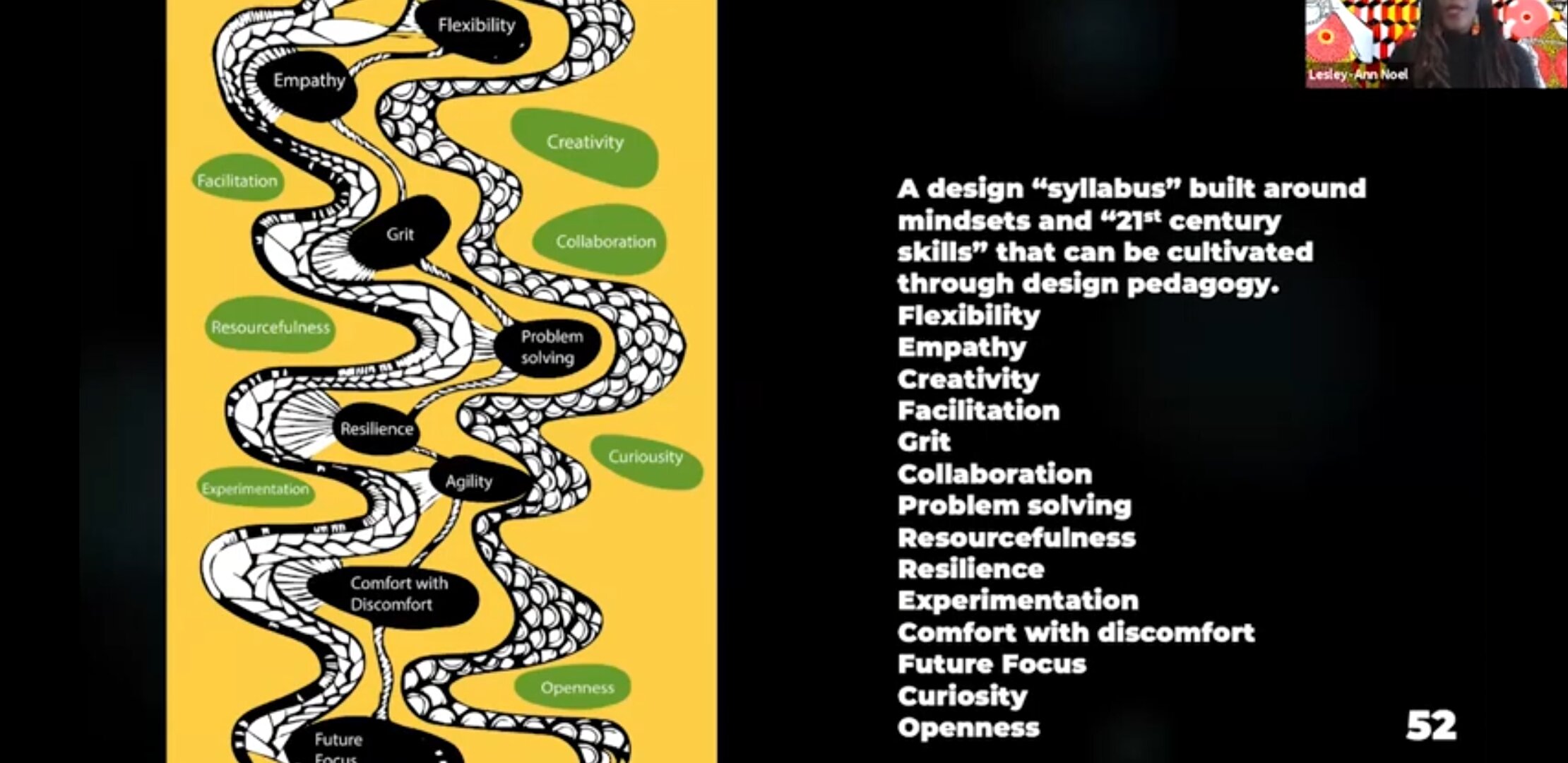I can’t believe it’s taken me SO long to share this conversation with the Amazing Elise Foster.
Elise is a powerful coach, an accomplished author, and a friend. She’s the co-author of The Multiplier Effect with Liz Wiseman and Beautiful Questions in the Classroom with Warren Berger (who’s written several bestselling books on powerful questions).
She was a thinking partner for me when I was in the early stages of writing my second book, and I was shocked and honored when she decided to come to my Facilitation Masterclass and even more shocked and honored when she actually got something out of it - proving that it really is more about what they practice and the container I create than what I teach!
I’m also honored that she’s been a great member of the Conversation Factory Insiders’ group - we started 2 years ago with alums of the masterclass meeting monthly for experiments and intentional practice, and 2 years and 22 sessions later, we’ve all learned a tremendous amount about leading groups online. Elise was kind enough to lead a session for the community on the QFT, a Question Formulation Technique from the Right Question Institute which has shifted how I think about Powerful Questions and how I coach teams on them, too.
In this conversation, I wanted Elise to unpack not just some of her favorite “Eye Opener” warmup exercises to help get teams to think differently, but also how she thinks about bringing them into sessions with teams, and why they matter.
Lots of folks talk about icebreakers - and they can be helpful to help us connect to each other from afar…but they are such a broad class of activities - they can include games like “Two truths and lie” which are just about connecting people as humans or “three things”, a classic improv game which helps folks just warm up their brains.
Priya Parker asks folks to check into the chat with where they are and what actual substance is beneath their feet, to help ground and connect us.
Eye-openers are both about what we do, as leaders and coaches of people in the moment, in order to create an experience for people…and eye-openers are also about how we help people reflect and unpack that experience and how to connect it to a larger idea about transformation and development.
Elise kicks our conversation off by talking about the “Hand Clasping Game”, a classic exercise that you can try now since we talk about it, but don’t give it enough time to “breathe” in the conversation.
Just clasp your hands together naturally. Of course, this assumes you have two hands. If this doesn’t apply to you, I hope you can imagine the process.
Now, unclasp your hands and “reclasp them” but shift hands - whatever hand was “pinky out” let the other hand be the “pinky out” hand. Elise calls this “reversing the weave” of your hands.
What do you feel?
Discomfort. Oddness. Weirdness.
That is a raw, visceral experience. Now, the magic happens when Elise unpacks this experience, and applies it to the context she works in - Leadership Transformation.
Having a toolbox or a mental “file” of these exercises can be great…in fact, I have a whole online course about them. But as Elise and I discuss, having the wherewithal to bring one of these out in a session also takes some guts and some faith.
You take some trust the team has in you and burn it…risk it on an edgy experience…and hopefully you earn that trust back, with dividends, at the end of the unpacking.
Also worth noting is that this is the second episode on the theme of “An experience is worth a thousand slides” when it comes to coaching executive mindset shifts. The first conversation was with Jeff Gothelf, most notably the co-author of Lean UX, where we talked about the Vase and Flowers exercise, another powerful eye-opener that I love very much.
This episode is short and sweet, so without further delay, enjoy the conversation as much as I did.
Links, Quotes, Notes, and Resources
Coaching Executive Mindsets Part One
Minute 1
Daniel Stillman:
You said the stock and trade of your work is getting people to lean into discomfort. The clasping hands game is like what I would almost call a micro eye-opener. When and how do you bring that exercise into your work to unlock a shift for people?
Elise Foster:
There are times when I started with it, where it's a new team and they've already talked about their current discomfort and they've said, "I want to make some changes." Then I'll bring it in at the start and have them clasp their hands naturally and then reverse the weave. The look on their face is almost this quizzical look of, "Why am I doing this?" And then I ask for their reflections. "What was that like for you?" And they talk about how unnatural it is and it's easy to go into and that's what you're likely to experience as you try on any new leadership behavior, is you try to engage with people on your team differently. You're going to experience that unnaturalness and you're going to want to back to your natural state. What does that mean for you and your team and your team's effectiveness if you keep reverting back to the natural state?
And I think the other moment of insight, though, that I'm just thinking through is most people know changing leadership behavior is really hard. And I think the biggest aha is even when you walk into something knowing it's really hard and prepared for that level of difficulty, we don't recognize how easy it is to revert back.
Minute 4
Daniel Stillman:
It's a cycle of concrete experience, reflection, and then connection and forward thinking. I think all of those components are required to have a complete cycle of what I would call eye opening or aha-ing.
Elise Foster:
Yeah, and I think what's coming to mind for me when you say that is the slides are the contents and a lot of training experiences and developing experiences tend to sit squarely in the put more information in and you'll get better results out. And they don't focus enough on, "Wait a minute, the shape of the container might just need to change." And that's really what has to happen in leadership change is, "I have to start thinking about it differently. It's not just adding more stuff in, it's about how do I make sense of that stuff in new ways."
Minute 17
Daniel Stillman:
So, I'm wondering what you do that the line from Henry V is, "How do you screw up your courage to the sticking place?" What do you do to make you, yourself, feel like you can get away with whatever thing you're going to pull out of your hat?
Elise Foster:
Some of it's just being bold and trying it but I think some of it's in the set up. As I set up the session and letting people know, setting up the tone that it's going to be experiential. So, part of leadership is a thing you do and a set of instructions, if you will, that you try to implement each time, but it's also how you feel when you're doing it. And so we're going to weave those two together. There's going to be a little bit of an idea that we're going to play with. And notice I used the word play because there's going to be some experience that goes along with that and a lot of leadership, in my mind, is really about experimenting because even if you have a playbook that has worked reasonably well for you, when you add on a new team member or a new challenge that your team is facing, that playbook, exactly as you ran it before, may not work tomorrow.
Elise Foster:
So, as a leader, you have to start to be able to sense into and notice, "Oh, well this thing was working. Why is it no longer working and what's the little experiments I can run to see what's going on and how I might rewrite that play?"
More About Elise
Early in her career, Elise Foster was happy as an engineer, managing high-profile global projects to solve complicated problems. But, it wasn’t long before she realized she wanted to solve different types of problems. Today, Elise is a leadership coach who enables education and business executives to unlock their potential and achieve even greater success. She is well-versed in the field of leadership and collective intelligence within education systems and is the co-author of The Multiplier Effect: Tapping the Genius Inside Our Schools, which hit shelves in March 2013. As a Multipliers Master Practitioner for the Wiseman Group in Silicon Valley, Elise guides leaders on using their intelligence to make everyone around them smarter and more capable. Her clients include leading educational institutions and corporations such as the Chicago Public Schools and Abbott Labs. She is passionate about working with early career and seasoned professionals and she delivers effective workshops and coaching.
Elise wasn’t always this passionate about her work. She took a chance and changed from a life in engineering to one in training and development, becoming a management fellow at Harvard University where she worked with faculty, staff, and students. Later she made her way to Indiana University (Kelley School of Business) where she coached more than 200 MBA students. Her path also includes a stop as an adjunct faculty member, teaching and mentoring local college students.
She holds both a bachelor’s and master’s degree in engineering from Virginia Tech and a master’s degree in education from Harvard University. She is a wife and mother of one school-aged daughter; she and her family enjoy traveling and exploring new cultures together. In her spare time, Elise volunteers with the Lilly Foundation Scholarship and Youth Leadership Bartholomew County where she works to uncover the genius in each high school student she encounters.
Full Transcript
Daniel Stillman:
This computer, okay. Elise, thanks for making the time to have this little conversation with me. So, where we just ended is where we're going to start. You said the stock and trade of your work is getting people to lean into discomfort. The clasping hands game is like what I would almost call a micro eye-opener. When and how do you bring that exercise into your work to unlock a shift for people?
Elise Foster:
So, it's a great question and I think it's one of the things I'm trying to lean more into is the emergence of things. And so instead of building it into an agenda, I'm looking for the opportunities to take a pause. There are times when I started with it, where it's a new team and they've already talked about their current discomfort and they've said, "I want to make some changes." Then I'll bring it in at the start and have them clasp their hands naturally and then reverse the weave. The look on their face is almost this quizzical look of, "Why am I doing this?" And then I ask for their reflections. "What was that like for you?" And they talk about how unnatural it is and it's easy to go into and that's what you're likely to experience as you try on any new leadership behavior, is you try to engage with people on your team differently. You're going to experience that unnaturalness and you're going to want to back to your natural state. What does that mean for you and your team and your team's effectiveness if you keep reverting back to the natural state?
Daniel Stillman:
Yeah. So that gives them a burst of energy from insight, I presume. There's this moment of insight where your skills in peeling the onion, unpacking, and letting them just sit with that experience gets them to an aha moment.
Elise Foster:
Yeah, most people, they reflect and they're like, "Wow, I didn't think something so small could be so hard." And I think the other moment of insight, though, that I'm just thinking through is most people know changing leadership behavior is really hard. And I think the biggest aha is even when you walk into something knowing it's really hard and prepared for that level of difficulty, we don't recognize how easy it is to revert back.
Daniel Stillman:
Yeah, yeah. So the thing that we were talking about right before that thing was the idea of what I call underselling and over delivering versus overselling and under delivering. Always a better position to be in. There's not a giant lead-in. There's not a huge drum roll into this activity. You're looking for a moment to sort of insert that pause, that opening of thought. It's not like it's specifically in an agenda for you.
Elise Foster:
Exactly. It's one of the things that I'll have... I haven't thought of it in this way, but I'll have a list of things that I could do in a session just to tickle my brain before I go into it. So they can pop into my awareness more readily than if I didn't have this set of things available to me and the clasping of the hands is one that I do have available and when I hear people start talking about their difficulty changing and how easy is it to revert back. To use the overused term these days, the somatic experience of feeling that...
Daniel Stillman:
Is it overused? I feel it could be used more by more people, but...
Elise Foster:
I guess it depends on what circles you run in. In the circles I run in, everything is about the somatic experience.
Daniel Stillman:
Yes. Let's use a better word. You're giving them a visceral experience of an idea. This brings in my new favorite watercolor that an experience is worth a thousand slides. Right, because you could give them a whole slide on that and I'm sure there's somebody who's got... No offense to anybody who's listening. It's like, you could explain that in a slide deck but people have to do it and then they have to have you ask them a question and have some silence while they kind of struggle and think about it and then they need you to connect it. It's a cycle of concrete experience, reflection, and then connection and forward thinking. I think all of those components are required to have a complete cycle of what I would call eye opening or aha-ing.
Elise Foster:
Yeah, and I think what's coming to mind for me when you say that is the slides are the contents and a lot of training experiences and developing experiences tend to sit squarely in the put more information in and you'll get better results out. And they don't focus enough on, "Wait a minute, the shape of the container might just need to change." And that's really what has to happen in leadership change is, "I have to start thinking about it differently. It's not just adding more stuff in, it's about how do I make sense of that stuff in new ways."
Daniel Stillman:
Yeah, yeah. So, let's connect this back to 1713 because I remember your aha when you went through that game for the first time. You're like, "Wait a minute. I can use this." And I think you're still on your journey of bringing it into... It's not in your tickler file, where you're like, "Oh, I can definitely bring this in." So, I'm wondering if you can talk about your arc of the aha you got trying it out in a low stakes way and then maybe we can go deeper into the mechanics of the thing, potentially.
Elise Foster:
Yeah, the two things that I remember most vividly from that experience was how little I know about the year 1713 and virtually everyone else knew about the year 1713 in that session, but how much that lack of knowledge kind of put us on equal playing ground. Just to set the stage of it, you brought together a group of people who didn't know each other at all. There might have been one or two people who knew each other, but the vast majority of us didn't know each other and it was a nice entry point to come in where we're all on this unstable footing and kind of feeling uncomfortable. So I think it created safety for people not to know and it created an awareness for me that there's a whole host of things we think we know a lot about but we don't.
Daniel Stillman:
In that we can't explain it perfectly to someone who has no knowledge of it.
Elise Foster:
Right.
Daniel Stillman:
So, I'm curious. I mean, so, the way I think of 1713. One of the things I love about it is... For those of you listening, it's an improv game where one person has to explain a thing to someone else who pretends to be from 1713, which is super fun because I think there's this idea that explain it to your mom, explain it to your grandma. And I'm like, "That's kind of sexist and ageist." So, let's be chronoist. There's nothing particularly controversial about just pretending to be from several hundred years ago and not understanding an iPhone. Which, by the way, I think I've seen one of the perfect introductions to it which is like explain an iPhone to someone from 1713. But I'm curious. You found an opportunity to bring it into your work in a low stakes way and you had some learnings and insights from it.
Elise Foster:
Yeah, so from the day we did that session, I'm like, "Where can I use this?" And one of the challenges is and I think part of it is I'm probably making it too big a thing. Like, "Okay, I need to insert this thing." And maybe if I did have it in that tickler file it might be easier. I didn't have, and I still haven't quite found what is the direct connection to this particular team effectiveness program or this particular leadership development program to use it, but I did have an opportunity. I was part of a three-day virtual conference and they were looking for people to host 90-minute sessions and then people to host 30-minute kind of in-between sessions. And I thought, "This is a great opportunity to play with some of these icebreakers." It's a super safe space and it's with other people who do a lot of online facilitation but are still in that transition phase of, "Well, I used to do all this in person, so I'll just take my slides and bring them up onscreen and do it that way." And so I thought it'd be a fun exercise. So, it was super fun. People had a lot of fun playing 1713 and then my all-time favorite game that I changed the name of to make it Seven-Second Animals.
Daniel Stillman:
Hey, just for the record, it was taught to me as Three-Second Animal and I changed it to Five-Second Animal because I thought that was too cruel. I think you're being way soft on your participants by making it Seven Second Animal. If I can go on record.
Elise Foster:
I am fully aware of that and I have a feeling the people that I shared it with will make it Nine- or Fifteen-Second Animal because-
Daniel Stillman:
Slippery slope.
Elise Foster:
But the couple things that I learned. One, people experienced this experience of not knowing in two ways. One, I have no idea what happens in the year 1713. And two, I don't know how to explain something that I do every day. And some people really leaned into it an got super creative and had a lot of fun with that piece of, "How do I get really creative about talking about these Zoom screen windows?" And the learning that I had, though, is... I had people and we did two rounds and it was as much an eye opener as it was a way to get to know and have a familiar face on the screen. So in between the two rounds, somebody said, "Oh, are we going in with the same topic?" And I thought, "Well, here's an opportunity and if they wait, it'd be emergent. And oh, well I had planned the same topic but what if we try a new topic? What topic would you like?" And the topic that they went with had to do more with the pandemic and this global reach of the pandemic.
Elise Foster:
When people came back, you noticed a different tenor in the conversation because people could relate back to understanding plagues and different things like that in the year 1713. And so the content area, the topical thing that you have people explain, I think, is really important. If there's any way to connect it back to a time when we didn't have the kinds of technology we have now. I think you'll have an experience, it won't, maybe, be the eye opening experience you want it to be.
Daniel Stillman:
Well, so there's so many things that that lights up for me and one is my own preference for... There's what I would call a pure icebreaker. Which is like, "Hey, name, rank, and serial number." Classic and it's barely even an icebreaker or like two truths and a lie. No offense, but it just doesn't do anything for me, as you know. I've said this before. To me, something like 1713 does warm people up. It does break ice but it is doing it about, potentially, content. And it's especially valuable. When I think about the finger clasping exercise, it's about discomfort and leaning into transformation. 1713, for me, is about connecting people to universal human needs and experiences, which in the product innovation and product design world, the idea of jobs to be done or user goals or personas.
Daniel Stillman:
Actually, the first time I used this, and this is super relevant to what you're going do for a facilitation Friday. It was at a hybrid meeting. An unintentionally hybrid gathering where there were like four or five people in person and maybe five or six people remotely because they didn't realize they were supposed to come in for this meeting. It was part of a 5G innovation lab that I was helping Verizon run and 1713 is the perfect game for a startup founder who's trying to design some internet of things sensor array for them to try to explain that in the most basic fundamental human components. It is grounding. And it worked fairly well for them to share their own insights after they're paired up experiences. I can pair up the remote people and the physical people and the remote and the physical people can still tell the story of their insights to each other.
Daniel Stillman:
That, to me, is the function of leaning into discomfort. You have that connected to a group need and from an innovation transformation perspective. That's what I connect 1713 to. It's like, "Oh, these people need to understand jobs to be done because their ideas are way out here and they need to get them right back down on the ground level of a person with a goal." And those things, the whole idea of jobs to be done is that it is durable. Like you said, with the pandemic, people have had that need, "How do I manage myself and my family when I can't go out and when I can't talk to people?" Like, that's something that happened and has happened and will, unfortunately, keep happening.
Daniel Stillman:
So I think it's like, when people say, "Oh, I need an icebreaker or a warmup for our gathering," I'm like, "Well, what do you want to do? What is your goal? What is the transformation you want to unlock for that group of people?" And I think that's what's interesting to me because I can hear you do that for your groups. You're thinking to yourself, "What do I need to unlock for them?"
Elise Foster:
Yeah. Well, what you're raising for me is two things. On the leadership transformation side, so much of the change is more elusive. It's not a durable good. It's not a thing I can see, touch, or feel. And so it has me puzzling through, what is that connection that 1713 could make within the context of their business and when you pitched the idea of having this conversation it had me thinking about an IT leadership team that I'm likely to be working with soon. When I think about the IT systems that exist today and what they're trying to do today to connect their global business, that could be a really good grounding piece, to start with 1713 to ground them in the work that they do and why it's so important for them to be effective as a leadership team.
Daniel Stillman:
Yeah. So, the thing that was bouncing around my head is I think sometimes people feel like, "I can't do this with a group of senior folks because they just want some slides. They want me to tell them what's what and they're going to think I'm bullshit or something and I'm going to have to sell it to them." So, I'm wondering what you do that the line from Henry V is, "How do you screw up your courage to the sticking place?" What do you do to make you, yourself, feel like you can get away with whatever thing you're going to pull out of your hat?
Elise Foster:
Some of it's just being bold and trying it but I think some of it's in the set up. As I set up the session and letting people know, setting up the tone that it's going to be experiential. So, part of leadership is a thing you do and a set of instructions, if you will, that you try to implement each time, but it's also how you feel when you're doing it. And so we're going to weave those two together. There's going to be a little bit of an idea that we're going to play with. And notice I used the word play because there's going to be some experience that goes along with that and a lot of leadership, in my mind, is really about experimenting because even if you have a playbook that has worked reasonably well for you, when you add on a new team member or a new challenge that your team is facing, that playbook, exactly as you ran it before, may not work tomorrow.
Elise Foster:
So, as a leader, you have to start to be able to sense into and notice, "Oh, well this thing was working. Why is it no longer working and what's the little experiments I can run to see what's going on and how I might rewrite that play?"
Daniel Stillman:
So, what I'm hearing you say, and I think is very true is you have to set up that they're coming into a space that is going to be different. You can't sandbag them entirely but there is also a little big of sandbagging where you... I'm hearing in your tee up, it's like, "Hey, everyone. Leadership is about experimentation and so we're going to run an experiment together, right? So bear with me, this might feel uncomfortable. Everyone stand up and dot, dot, dot."
Elise Foster:
Yeah, exactly. And then inviting them in that to experience their discomfort and notice what was uncomfortable for them. What was the voice in their head saying? Was it, "I'm going to look like a fool in front of my companions?" Is it that, "I just don't think there's anything we can learn from this." What's their self talk? "I have better things to be doing. I have a problem to be solving."
Daniel Stillman:
But this is profound, Elise, because I think we often feel like as folks who are coming in as change agents to coach a group of folks... I'll just say for myself, I know people are like, "Daniel, tell us what to do." Right? And the whole, "Fill us up with more knowledge so that our knowledge cup is full so that we can just pour it out on everyone else." The idea that it's my job to make them sit with some discomfort, that's something that I strongly identify with. It is my job to get them to sit with this uncomfortable moment of, "What was that like? How would you connect this to your work?" Because I have a little bit of faith that they will have an insight. But I think there is a feeling of abject terror in myself and everyone else when you pull one of these things out that maybe it won't land. Maybe it won't connect. Right? Maybe they won't have an insight.
Elise Foster:
Yes, and what you're raising for me is sometimes they won't, but they will still try to convince you they have because they play along really, really well.
Daniel Stillman:
Right, right. Yeah. Confabulation. People have had an experience and if all they say was, "That was uncomfortable and I hated that," then we can still work with that, presumably.
Elise Foster:
Presumably, but there's also, I think, the other element to this is I think, in my experience anyway, is you can get a room full of people who all had an experience together and there's one person for whom it was really profound and then everyone else is like, "Oh, it was really profound for them. Maybe it should have been more profound for me, so I'll add something in that makes it sound like it was profound for me." And there's not a lot you can do with that and you probably won't know for whom it was really profound. I think, though, creating the space for people to have the reflective moment there and some sharing gives people something to take away and hopefully further reflect on.
Daniel Stillman:
Right. So, when we think about how to do the workshop math to include these things, I think there has to be some popcorning of people's experiences in. And depending on how large your group is, that can be a lot or a little. And if we want to add on your experience I doing this, I think you always need a warmup to your warmup. So, I think what you did in the group was great, where you said, "Okay, let's do it with something straightforward that we all know and then let's do it with something stranger that's harder for us." I mean, these things take time. I think this is actually the biggest challenge that I'm having with this executive leadership team session that we're doing. It's like the max we can get is two hours with... these are very, very senior people from a major global brand and me and my internal [inaudible 00:22:51] are having this little battle over... She's like, "Can you do it in 30 minutes?" And I'm like, "No. I can't. It takes 45 because they have to think and we have to talk and we have to hear from everyone and that means she only has another hour and 15 to do all the slides."
Elise Foster:
It's probably been three or five times in the last week and a half where I have heard a colleague say, "You know, I have just decided, I mean, in this online world, you can't do anything more than two hours." I mean, you just can't do anything more than two hours because people check out. It's the max people can offer you and when I think about the experiences that we had in the Master Facilitation course and some really well held online facilitation, I don't think it's the length of time that matters. I think it's how you choose to use that length of time. So when you think about planning this, it drives me want to ask the question of the leaders you're working with, "Okay, what is driving your time window?"
Daniel Stillman:
Thank you for the pushback. You're not wrong, but I think part of the reality is people... It's about their commitment to anything. Like, nothing's that important because everything is important. To literally get four hours from them. Like, of course I could design a four hour session that would be deeply engaging and would be incredibly valuable, right? But the question is would they be willing to see it as an organizational imperative to give up a "full day." It was hard enough to get a full day back in the day. Now a full day is... I mean, people just have kids around their house and even the CEO of a major brand can have a baby or a pet walk across the screen. But the pushback is well taken and well provided.
Elise Foster:
Yeah, and I think it's also pushback, though, for my own thinking, to go, "Okay, why am I pushing for more time? What is it?" And so it just means you do really have to do the math. What is the way that I quickly bring them in and knowing... It was funny, I did a session for a big Latin American brand and I came on and I started talking and I'm immediately getting Zoom messages going, "There are no slides showing. There are no slides showing." I'm like, "I know there are no slides showing. Trust me, the slides will come but there aren't any slides right now." And so it was a great learning to set expectations for what is it that we're going to be up to here today and this may look and feel like some of what you've experienced in the online world and it may look and feel quite different.
Daniel Stillman:
Yeah. So this goes to setting expectations and what my counterpart and I were talking about was when you're designing that arc of the conversation, I was like, "Let's just have a hot start." And we just let them know that we're not going to do introductions. They all probably know each other. They don't need to do that thing. As much as I love check-ins, this is not the time for it. Okay, we've got two hours with these folks. You're like, "Everyone, grab your pen and a piece of paper and we're going to draw a vase." And it's like, "Okay, that's where we're going." And I think the way I think about it is, "I'm going to burn some trust and hopefully I will earn it on the back end as quickly as possible.
Daniel Stillman:
You know, this is a very short burn and a very short cycle of the clasping hands if you're listening to this while you're folding laundry. The clasping of hands is a short burn and a strong payoff because you've done it a million times. 1713, because it's an improv game and requires either a fishbowl conversation and two very, very brave volunteers and then potentially a breakout session and then a popcorn coming back. It's a 30 minute set piece and so you have to really want to help people understand jobs to be done is the way I would put it or that we don't understand who our product is for or we can't explain it to ourselves or to each other in our organization. You talk about the IT silos that you're talking about. Like, "Can we actually explain all of our silos to each other? Right? And if we can't, then that's aha, we can't. But that means that we don't understand them."
Elise Foster:
Yeah. I think the word aha is kind of ringing true to me in this conversation. The work to be done is to create a container so that everybody can have an aha no matter where they are in the process. For some people the aha is going to be a big huge thing and for other people, it's just going to be, "Oh, I realize how uncomfortable that is and maybe I need to get more comfortable with discomfort." And other people are going to go, "Oh, I totally see why I have abandoned that thing I have been so committed to doing."
Daniel Stillman:
Yeah. There's one thing that I'm really taking away from this, because I know our time is growing nigh. This idea of the bell curve of people's experience and that it's okay that somebody's going to be like, "Wow, Elise you changed my life. I never thought about leaning into discomfort." And somebody will be like, "I don't really get it, but I can see other people are..." And then this person in the middle is like, "I see other people are getting it and so that's kind of interesting." And that that's okay because what you've done is you've given them an experience together and they get to talk about it, unpack it, and potentially own it and it can sometimes just become a metaphor. Luckily it can become a new piece of languaging for people. So like, "How are we leaning to this exercise or can we explain this to somebody from 1713 or are we building a vase or a way of experiencing flowers?" Which is another exercise I may be sharing in this workshop. I think it's profound to give people a shared experience.
Elise Foster:
Yeah, thank you for that and I think it's profound and we can't know how much it nudges the system. That experience is something that might not take hold for 18 months. And 18 months later, something major happens because of that experience and we'll never, ever know that.
Daniel Stillman:
Boy, that is heartbreaking, though, because this work is hard enough, right? And transformation doesn't happen with the snap of a finger. It takes time. So yeah, it sounds like one thing you remind yourself is, "This is a seed I have planted," and to trust that it will find and take root.
Elise Foster:
Yeah, and if you have more than one opportunity with them, what do you notice in the soil consistency and what new nutrients do you need to bring in to help it grow just a little bit faster if that's what you're going for?
Daniel Stillman:
Yeah, yeah. You know, we can accelerate it by providing some heat and some focus, but it's a balance. I'm growing seeds right now, so this is very much a take-home for me. It's like, you can build a greenhouse but you can get too much moisture and then you have mold. Right? You can overcook it, right?
Elise Foster:
Yeah.
Daniel Stillman:
So I think holding these experiences lightly and just being like, as my mother would say, "Everyone is here to contend with themselves." Right? We're providing them an opportunity to have an experience. We can't force them to have an experience.
Elise Foster:
Right, and the more you try to force it, the more mold you grow.
Daniel Stillman:
Right. Elise, anything we haven't talked about? Anything I haven't asked you that I should have asked you about this idea? We've covered a lot of really interesting ground on this.
Elise Foster:
No, I think I just want to say thanks. It was a really fun conversation and something new always is sparked when we have a conversation. So thank you for that.
Daniel Stillman:
Thank you. Yeah, I'm leaving with this, like, "You can't force someone to have an experience. It's an opportunity." And to remind myself and everyone else, it is a risk and the payoff can be there or not and that it's okay.
Elise Foster:
I mean, just with that, when I coach clients, there's something they're up to in between sessions and I always remind them, "Don't beat yourself up if you don't do the thing. Just pay attention to what got in the way of you doing the thing because we learn as much from you doing the thing as we learn from you not doing the thing."
Daniel Stillman:
Right. I agree, and they feel so bad. Negativity keeps them from trying again.
Elise Foster:
And we learn from that and so I think that's what your comment brought up for me. So, thanks again.
Daniel Stillman:
Thank you, Elise. I will call scene. I'll stop recording.
